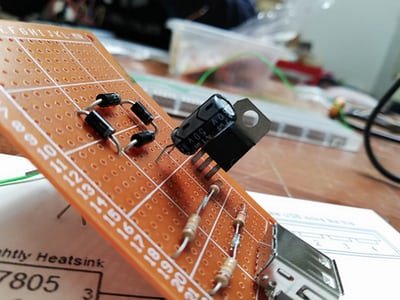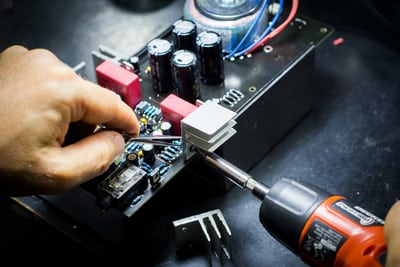Regarding resistors, especially thin-film chip resistors are very commonly used in various fields. For beginners, the selection of resistors is nothing more than choosing the size of the resistance and packaging specifications, but the physical characteristics of the resistors are not deeply understood.
This kind of understanding is not a big problem in ordinary applications, or when doing graduation projects. However, in the actual product design, it is necessary to consider all aspects of the resistor and take various parameters into consideration, so that such a product may be stable and reliable in various use environments.
What is a resistor?
This is a simple concept, specifically designed to block the flow of electrons, namely resistors. In fact, any substance in nature will produce resistance to electrons, but the size is different. The standard resistance values are for example: 10Ω, 100Ω, 1KΩ, 1MΩ, etc.
Commonly used parameters
From the perspective of circuit design, the first parameter that comes to mind is the resistance value, which affects the calculation of current:
I=U/R;
It also involves the calculation of power:
P=I²R;
In addition, there are calculations for other circuits such as voltage division and bias.
If you consider from the perspective of PCB design, the first thing to determine is the type and size of the resistor package, and the commonly used size specifications of chip resistors are arranged from small to large: 0201, 0402, 0603, 0805, 1206, 1210, 2010 , 2512.
Important parameters
First of all, the rated power of the resistor must be considered. If the resistor is loaded with more power than it can withstand, the resistor will eventually burn out due to overheating. For example, the rated power corresponding to the 0603 package is 1/10W; the rated power corresponding to the 2512 package is 1W.
One more point, suppose a 1A DC current passes through a 0.1Ω resistor, and a voltage drop of 0.1V is generated on it. According to P=UI=0.1✖1=1/10W, due to the rated power of the chip resistor of the 0603 package It happens to be 1/10W, can we use it directly?
Derating design
Of course not! For example, a car that runs at full load for a long time. Compared with a car that runs at half a load for a long time, which car has a longer life and is more durable? There is another important reason: high temperature will make the rated power of the resistor drop proportionally.
This is the derating design, try to avoid the resistor working with full load for a long time, and extend the service life in a more reasonable power range. In addition, the use of a larger package can disperse the heat of the resistor, which is conducive to PCB heat dissipation.
In addition, the biggest benefit of resistor derating is that the resistor can maintain its original power within the operating temperature range. From the above figure, we can see that when the resistor temperature reaches 70°C, the rated power starts to be discounted. When the temperature reaches 100°C, the rated power is only 60% of the original. If you do not use derating, the consequences can be imagined!
As for the extent of derating, it needs to be considered comprehensively according to the actual situation of the project and the design standards, usually 50% to 80%. Going back to the example above, if you need to derate by 50%, you need to change the 0603 package to the 0805 package (0805 package corresponds to 1/8W rated power).
Electrical characteristics
It is necessary to be clear in which occasions the products we design will be used in, whether it is a product used by ordinary consumers, an industrial electronic product, or an automotive electronic product?
Before mass production, the project team will arrange experimental tests according to different product positioning. The environmental tests include high temperature test, low temperature test, high temperature and high humidity, and alternating damp heat.
Therefore, we have to consider the operating temperature range of the resistor. The parameters marked in the above figure show that the temperature range is between -55°C and 125°C, and the resistor may fail or be damaged if it exceeds this range.
For example, if this resistor is applied to aerospace electronic equipment, the ultra-low temperature in the vacuum may expose the resistor to the risk of failure (a significant drop in resistance).
Accuracy problem
Commonly used thin film chip resistors have an accuracy of 5% (for example, 10Ω±5%). In some occasions that require precise calculations, 1% or 1‰ accuracy resistors may be used, which needs to be selected according to the actual circuit. Type now.
Finally, I will tell you a little trick, what if you don’t have 1% precision resistors on hand? You can adjust the upper and lower limits marked by the red arrow to ±1% according to the screening method in the above figure (because the resistor manufacturer does this), as long as the measured value falls within the two lines, they are classified as 1 % Precision resistors are sufficient, of course, provided that the demand is not large.



No comments yet